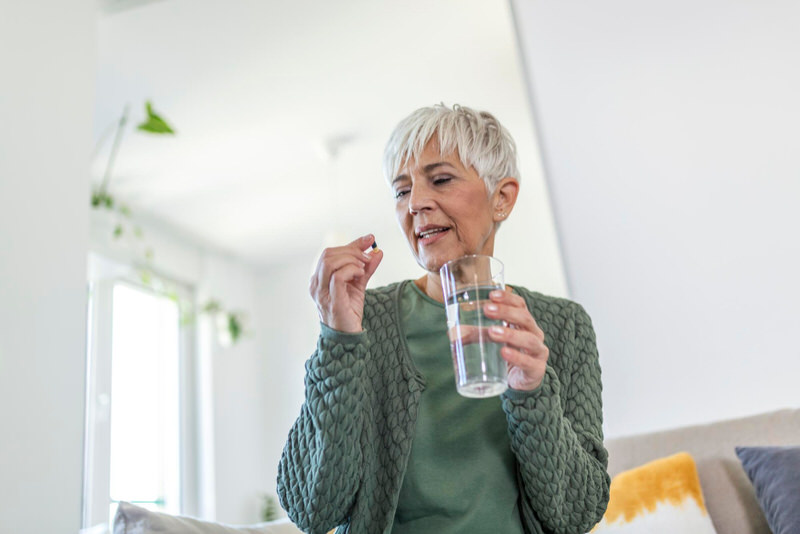Lisinopril is mainly prescribed by doctors to treat high blood pressure or hypertension. Different fruits, vegetables, protein-based foods, dairy products can contain variating quantities of potassium which you will need to consider before preparing your potassium diet plan. Dieting is crucial since too much potassium can negatively impact your body, starting from mild symptoms like nausea, numbness, and diarrhea, later developing into more serious conditions like heart palpitations.
You can treat your potassium overdose with various medications such as diuretics, or you can stick to home remedies such as following a dietary plan and drinking lots of water to prevent dehydration.
Potassium is an essential ingredient for the smooth functioning of your body as it keeps your heartbeat in check, helps your muscles contract, helps transport nutrients into cells, and carries out waste products from your cells.
When taking lisinopril, you can expect a significant increase in the potassium concentration of your body. So, it’s natural to wonder if your daily intake of potassium, along with the effects of lisinopril, could lead to excess potassium in your blood levels.
What is lisinopril, and what is it used for? How much potassium is too much with your lisinopril dosage? What are some high, moderate, and low potassium foods so that you could exclude or include them in your diet? What symptoms can you expect from high potassium levels in your body? How can you treat your high potassium levels either by medication or home remedies?
What is lisinopril and what is it used for?
Lisinopril is a medical drug that classifies as an ACE (Angiotensin-converting enzyme) inhibitor that targets relaxing your blood vessels so that your blood can flow more smoothly. It is often used and recommended by doctors when treating high blood pressure.
It’s most often taken orally with or without food and is advised to be taken daily. The dosage entirely depends on your medical condition and its response to your body. So, you definitely should consult your doctor regarding the ideal dosage for you.
Lisinopril helps lower your raised blood pressure, thereby helping to avoid any strokes, heart attacks, and even kidney problems in the long run.
How much potassium is too much with lisinopril?
Lisinopril itself can raise your blood potassium levels, which is why this question is important in managing your potassium levels. According to the US National Library of Medicine, constant monitoring is required after lisinopril is taken to ensure that your potassium levels and renal function are in check.
There are two aspects to this question. Firstly, the aspect of potassium intake through LVP solutions, and secondly, the aspect of potassium intake by way of foods.
- LVP Solution with potassium – LVP solutions are a continuous infusion of solutions by administering them at a slow infusion rate. If you’re planning on using lisinopril together with the LVP solution with potassium it is mandatory to consult your doctor since such a combination could cause a distinct rapid increase in your blood potassium levels. It could also expose you to a condition known as hyperkalemia known to be developed when you overdose on potassium.
- Potassium in food – When it comes to food too, it’s highly recommended to consider eating only low potassium-containing foods and staying away from moderately high or high potassium diets.
- Potassium supplements – You may need to temporarily halt taking any salt substitutes or any potassium supplements while you’re taking lisinopril unless you have gotten it approved by your doctor.
Different foods and potassium levels for your diet
If you’re currently undergoing Lisinopril medication, it’s best to look at the options you have when restricting your potassium intake. The following table will help you regulate your potassium, as advised by your doctor.
| High potassium foods (above 200 milligrams per serving) | Moderate potassium foods (50 to 200 milligrams per serving) | Low potassium foods (less than 50 milligrams per serving) |
|---|---|---|
| Fruits like bananas, papayas, raisins, kiwis, mangoes, oranges, pears. | Fruits like apples, peaches, strawberries, watermelons, pineapples. | Fruits like cranberries, nectar of papaya, and mangoes. |
| Vegetables like baked potato and sweet potato with skin, broccoli, mushrooms, zucchini. | Vegetables like corn, carrots, green beans, cucumber, lettuce, asparagus, and canned peas. | Vegetables like celery, cauliflower, and cabbages. |
| Protein foods like baked or broiled salmon, roasted turkey, dark meat, peanut butter. | Protein foods like salted peanuts, almonds, cashews, and eggs. | Protein foods are mostly under the categories of moderate to high potassium. |
| Dairy products like yogurt, non-fat, low-fat, or even whole milk. | Dairy products like ice cream and ricotta cheeses. | Some cheeses contain low potassium, like Swiss cheese. |
What are the symptoms of high potassium levels?

While potassium is an essential element when taking your lisinopril, too much potassium can lead to a condition known as hyperkalemia or high blood potassium. While mild hyperkalemia may show minor symptoms which you might ignore easily, such symptoms can progress over weeks and months if untreated.
The main symptoms to look out for are listed below:
- Abdominal pain and diarrhea
- Numbness or tingling sensation
- Nausea and vomiting
- Irregular heartbeats or palpitations
- Difficulty in breathing
- Chest pain
- Constant tiredness or weakness
According to the US National Library of Medicine, dangerously high potassium levels can even result in heart failure, paralysis, or life-threatening arrhythmias.
How can you treat your high potassium levels?
Of course, the primary aim of your doctor will be to get rid of the excess potassium levels in your blood. In case of emergencies or when your high potassium is caused by kidney failure, the best option for you to go with is hemodialysis. This involves removing all wastage from your blood, including excess potassium.
When it comes to other medications, Calcium gluconate and various diuretics such as loop diuretics, thiazide diuretics could be prescribed by doctors to treat your high potassium levels. According to a 2020 recent study, new drugs such as patiromer and sodium zirconium cyclosilicate have been proven effective in treating hyperkalemia by increasing gastrointestinal potassium elimination.
Home remedies include sticking to only low potassium foods, as indicated in the table. It’s also equally important to keep an eye on your salt substitutes.
If you’re purchasing a salt substitute, be sure to check its list of ingredients and refrain from buying any product that includes ‘potassium chloride.’
Drinking adequate amounts of water is essential since dehydration can harm your body and cause higher potassium levels in your blood. When buying herbs, you need to stay away from herbs like nettle and dandelion, which increase potassium levels.
FAQs
Can too much potassium damage your kidneys?
If you’re a person with chronic kidney disease, you will need to limit your potassium intake since such kidneys will find it difficult to process the potassium properly, which may cause it to over-collect in your blood.
If you’re not suffering from any kidney issues, still it’s best to abide by the recommended potassium amount per day, ranging from 2600 milligrams to 3400 milligrams.
What can low potassium levels do to you?
Just like too much potassium can lead to a risk in health, too little of it can impact your body negatively. Low potassium levels can also cause muscle weakness, cramps, twitches, and dangerous symptoms such as paralysis and abnormal heart rhythms.
Are there side effects to lisinopril?
Side effects to any medication are pretty normal. When it comes to lisinopril, you can expect lightheadedness, dizziness, dry cough, or a headache since your body takes a bit of time to adapt to your medication. However, if the side effects worsen or refuse to go down, it’s best to contact your doctor.
Conclusion
The best way to precisely decide about the potassium and lisinopril requirement is by addressing your doctor since the answer to this question depends on any existing conditions that you have, your food intake, and how your body reacts to the medication.
Of course, it’ll always be safer to stick to moderate or low potassium foods, given that hyperkalemia, as noted down by the US National Library of Medicine, is a potentially life-threatening electrolyte disorder.


